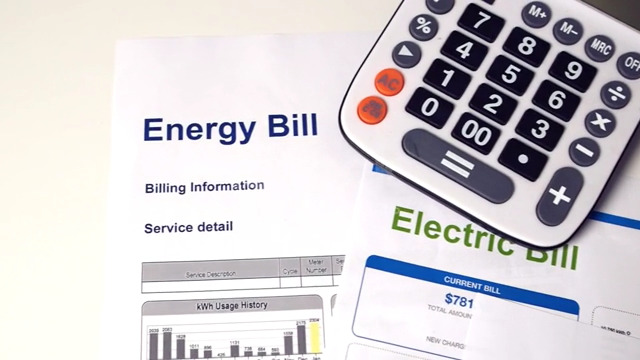Understanding Commercial Electricity

Understanding Commercial Electricity: Exploring its Definition and Real-World Examples
Commercial electricity powers businesses of all sizes, driving productivity, enabling technological advancements, and fueling economic growth. Understanding the concept of commercial electricity is essential for entrepreneurs, facility managers, and individuals involved in the business sector. In this article, we will delve into the definition and significance of commercial electricity, examine its key components, and provide real-world examples to illustrate its importance in various industries. By exploring different instances of commercial electricity usage, we aim to shed light on how businesses rely on this essential resource to operate effectively and contribute to the economy.
I. Definition and Significance of Commercial Electricity
Commercial electricity refers to the electrical power supply utilized by commercial establishments, such as offices, factories, retail stores, and other businesses. It encompasses the generation, transmission, and distribution of electric energy to meet the diverse needs of commercial operations. Commercial electricity is vital for powering lighting systems, operating machinery and equipment, supporting information technology infrastructure, and facilitating various business processes.
The significance of commercial electricity lies in its role as a fundamental utility for businesses. It enables uninterrupted operations, promotes efficiency, and enhances productivity. Reliable and affordable access to electricity allows businesses to thrive, attract investment, and contribute to economic development. Moreover, commercial electricity serves as a catalyst for technological innovation, driving advancements in sectors such as telecommunications, manufacturing, and services.
II. Key Components of Commercial Electricity
Power Generation:
Commercial electricity begins with the generation of electrical energy from various sources, including fossil fuels (such as coal, natural gas, and oil), nuclear power, hydroelectric power, wind energy, solar energy, and geothermal energy. Power plants equipped with turbines and generators convert these energy sources into electricity.
Transmission and Distribution:
After generation, electricity undergoes transmission and distribution processes to reach commercial establishments. High-voltage transmission lines carry bulk electricity over long distances from power plants to substations. Subsequently, distribution networks consisting of transformers, power lines, and utility poles distribute electricity to businesses through lower-voltage lines.
Power Consumption and Utilization:
Within commercial establishments, electricity is consumed for various purposes. Lighting systems, heating, ventilation, and air conditioning (HVAC) systems, refrigeration, office equipment, manufacturing machinery, and data centers are examples of electrical systems used in commercial settings. Businesses rely on a steady and dependable supply of electricity to maintain operations, support customer service, and enable production processes.
Energy Efficiency and Conservation:
Energy efficiency and conservation are critical considerations for businesses seeking to optimize their electricity usage. Implementing energy-efficient technologies, such as LED lighting, smart sensors, and energy management systems, can significantly reduce electricity consumption and lower operational costs. Moreover, adopting energy conservation practices, such as implementing employee awareness programs and optimizing HVAC systems, contributes to sustainability and reduces the environmental impact.
Renewable Energy Adoption:
Increasingly, businesses are embracing renewable energy sources to power their operations. Installing solar panels, utilizing wind turbines, or procuring energy from renewable sources can help companies reduce their carbon footprint, enhance their brand image, and achieve sustainability goals. Several large corporations have made commitments to transition to 100% renewable energy, showcasing the role of commercial electricity in promoting environmental stewardship.
III. Real-World Examples of Commercial Electricity Usage
Retail Stores:
Retail establishments rely on commercial electricity to power lighting systems, cash registers, point-of-sale terminals, refrigeration units, and security systems. Electricity enables businesses to create an inviting shopping environment, facilitate seamless transactions, and ensure the proper storage and preservation of perishable goods.
Manufacturing Facilities:
Manufacturing plants heavily depend on electricity to operate machinery, control production processes, and maintain a safe working environment. Electric motors, conveyor belts, assembly lines, and precision equipment all require a stable and efficient supply of electricity. Commercial electricity enables manufacturers to increase production capacity, streamline operations, and meet the demands of their customers.
Office Buildings:
Commercial office buildings utilize electricity for lighting, air conditioning, heating, elevators, and powering electronic devices such as computers, printers, and telecommunication systems. Reliable electricity ensures a comfortable and productive work environment, facilitates communication, and supports the operation of critical infrastructure within office spaces.
Data Centers:
Data centers are at the core of the digital age, hosting servers and storing vast amounts of information. These facilities require large amounts of electricity to power the servers, cooling systems, backup generators, and redundant infrastructure. Commercial electricity is essential for data centers to maintain uninterrupted operations, deliver reliable online services, and safeguard valuable data.
Hospitality Industry:
Hotels, resorts, and restaurants rely on commercial electricity to provide essential services to their guests. Electricity powers lighting, heating and cooling systems, kitchen equipment, entertainment systems, and security systems. Uninterrupted access to electricity is crucial in the hospitality industry to ensure guest comfort, safety, and a seamless experience.
Commercial electricity is an indispensable resource that powers businesses across various sectors, driving economic growth and enabling technological advancements. From retail stores and manufacturing facilities to office buildings and data centers, commercial establishments heavily rely on a stable and efficient supply of electricity to operate effectively. The significance of commercial electricity lies in its ability to facilitate productivity, enhance operational efficiency, and support critical infrastructure.
As businesses strive for sustainability and environmental responsibility, the adoption of energy-efficient technologies and the integration of renewable energy sources in commercial electricity usage are becoming more prevalent. The transition to cleaner and greener energy sources not only reduces environmental impact but also enhances brand reputation and aligns with the growing demand for sustainable business practices.
Understanding the components and real-world examples of commercial electricity usage empowers businesses to make informed decisions about their energy needs, optimize energy consumption, and contribute to a more sustainable future. By embracing energy efficiency, renewable energy solutions, and conservation practices, businesses can not only reduce costs but also demonstrate their commitment to environmental stewardship.
Find commercial electricity is the lifeblood of modern businesses, powering their operations, driving innovation, and shaping the business landscape as we know it today. The continued evolution and responsible utilization of commercial electricity will be vital in addressing the challenges of the future and creating a sustainable and efficient energy ecosystem for businesses worldwide.
